New Texas Abortion Law Poses New Problems for Legal and HR Departments, and Not Just in Texas
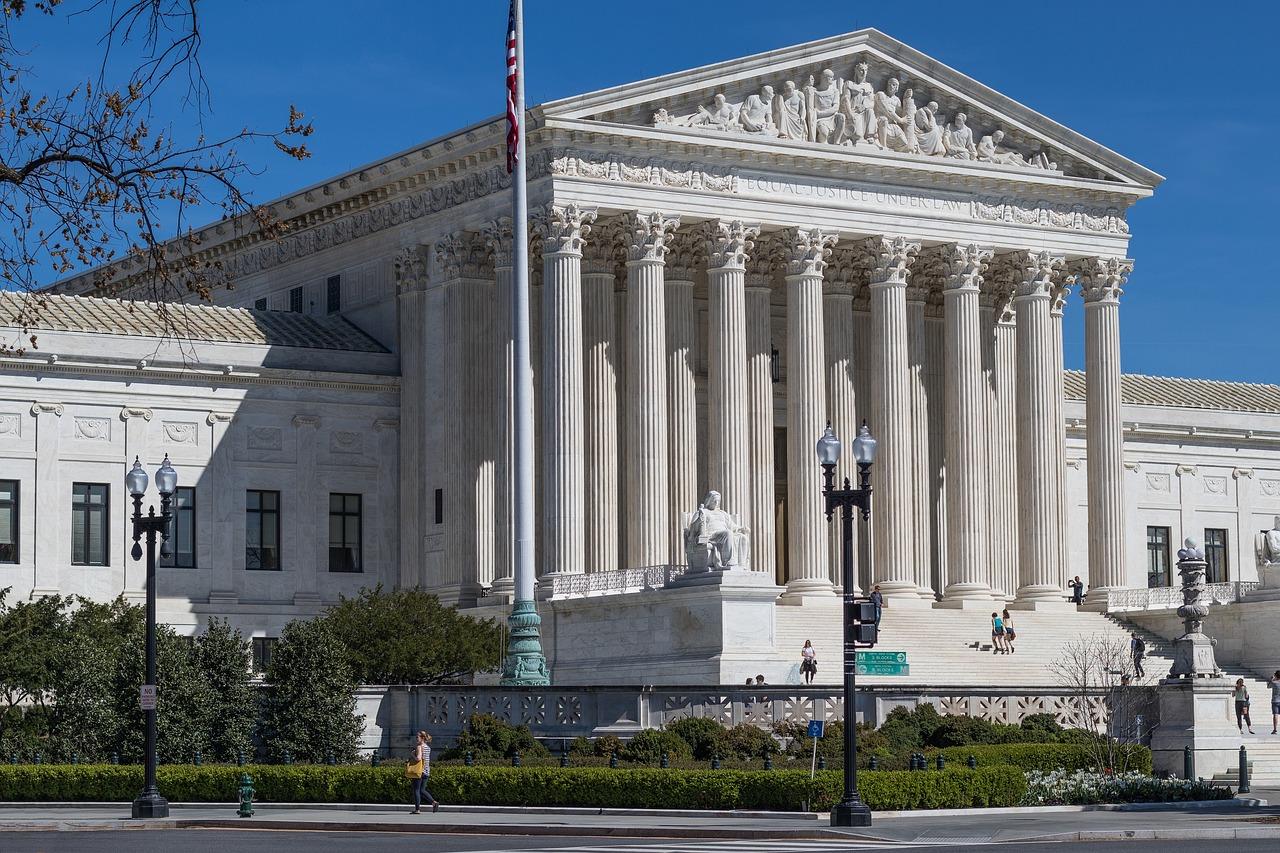
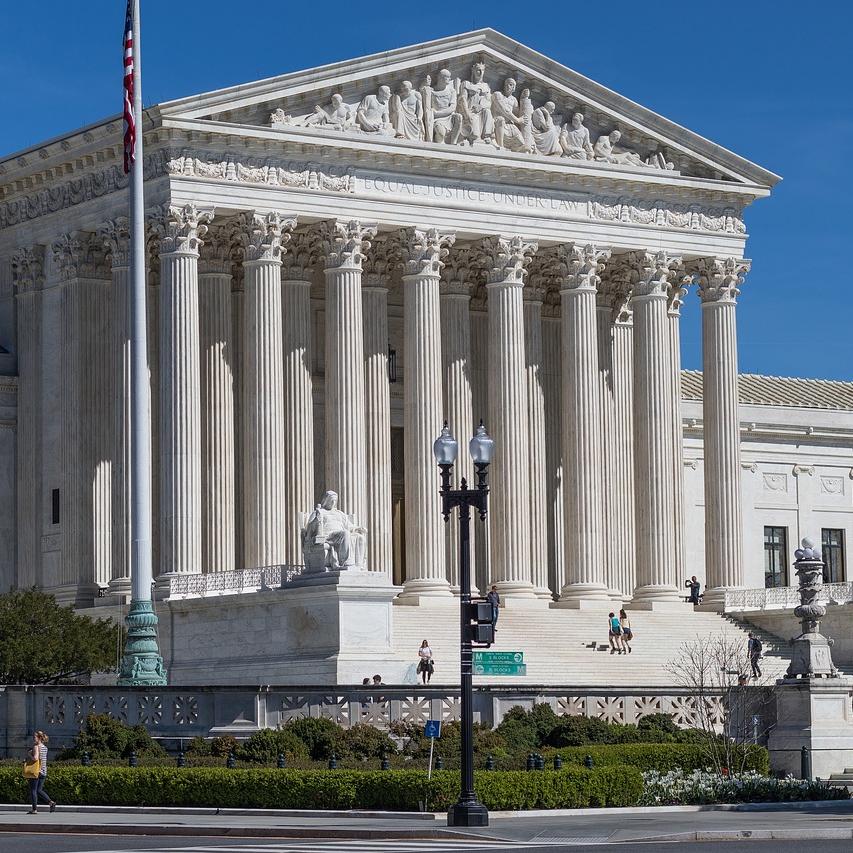
As if the COVID-19 crisis wasn’t causing enough migraines for corporate HR departments all over the country, here comes Texas with a new abortion law that throws a massive monkey wrench into the works. The new law has already sparked attention far beyond the borders of Texas, because it potentially covers every adult in the U.S., whether a Texas resident or not.
Another day, another massive headache for HR departments
The new law, Senate Bill 8, authorizes private citizens to bring civil action related to women who seek abortions in Texas after a pregnancy passes the six-week mark.
That’s a sneaky way to gut the protections described by the 1973 Roe v. Wade decision of the U.S. Supreme Court. That famous decision prohibits government entities from establishing blanket prohibitions on abortion up to the age of viability, generally considered to be 20 weeks from conception. Though many states have chipped away at those protections over the years, Senate Bill 8 takes it to another level by entitling individuals to take action on abortions after just six weeks, even if they have no personal stake in the procedure.
To be clear, the new law does not entitle any complete stranger to sue a woman who is seeking an abortion. However, a civil lawsuit could easily render a private decision into a public nightmare, exposing women to abuse from their community, including spouses and parents among other relationships.
The new law is apparently aimed mainly at abortion clinics and those who work in them. Of more general concern is the potential impact of the law on anyone else who is suspected of aiding in an abortion, including anyone in whom a woman confides.
That opens up some interesting questions for corporate HR departments, both in and out of Texas. The law apparently provides for Texas residents to act on anonymous tips, raising the possibility that out-of-state tipsters can get the ball rolling on abortion lawsuits in Texas.
For starters, corporations will have to determine if their wellness programs raise the risk of an abortion lawsuit under the new law. To be on the safe side, they may need their female employees in Texas to sign a certificate pledging not to discuss their pregnancy status with their wellness program or, for that matter, anyone else in the company.
Corporations will also have to decide how to handle the situation if one of their employees brings an abortion lawsuit against someone in Texas, especially if the lawsuit is brought against another one of their own employees. If the lawsuit “snitching” problem gets out of hand it could have a significant, negative impact on team-building efforts and employee well-being.
In addition, out-of-state employers will also have to develop with new policies dealing with the right of female employees to turn down assignments in Texas. After all, pregnancy is a high-risk health condition. The option of out-of-state travel to an abortion clinic sounds doable on paper, but it can layer additional health risks on pregnant women, pose new financial stresses, raise difficulties in dropping family or work responsibilities for extended periods, and expose women who would otherwise be able to keep their decision to abort a private one.
All of this is over and above the headaches facing employers with a corporate footprint in Texas. They are now faced with navigating a minefield of new HR concerns and they will have to find ways to reassure their employees — including top executives — that they and their families are at no real risk of being sued under the new law.
In addition, recruiters seeking to tempt top talent to Texas will have to explain how prospective employees can expect to be protected against vigilante-style abortion lawsuits.
Corporate America responds to new Texas abortion law
The potential for a strong negative impact on recruiting has already surfaced in a quick poll commissioned by Tara Health Foundation, but some companies with a footprint in Texas have not waited for public opinion to come around.
Lyft and Uber, for example, immediately recognized that they could lose business in Texas, as the new law potentially exposes anyone who drives a woman to an abortion clinic. Both firms have offered to pay legal costs for drivers facing lawsuits, but that is weak tea compared to the shaming some drivers may face from their communities. Drivers may seek other, less risky gig work elsewhere rather than face the inconvenience of a lawsuit or blowback from friends and relatives.
The tech industry is also on high alert. Ad Age has reported that “advertising and media leaders, especially women and women of color, are calling for action,” with some advocating for a boycott of SXSW and other high-profile events in Texas.
When boycotts are not the point
Boycotts can be effective in changing corporate behavior. In some states, boycotts have also been a factor in changing the balance of political power. However, that impact remains to be seen in Texas, where the political landscape has been hardening in favor of Republican office holders over the years.
Seen through the lens of political power, SB 8 is an attempt to solidify GOP control by driving Democratic-leaning voters out of the state.
The last election cycle showed that the Republican party is losing female votes in formerly “red” suburban strongholds. Rather than adopt policies that attract more suburban women, SB 8 represents a doubling-down on policies that affront Democratic-leaning women. In other words, driving educated, financially mobile women and other Democratic-leaning voters out of state is a feature, not a bug, of SB 8.
If there are any doubts, take a look at the concurrent passage of new voter restrictions by the Republican-controlled Texas legislature, signed into law by Republican Governor Greg Abbott.
The SB 8 end game
Whether Democratic-leaning voters are driven out-of-state, discouraged from moving into the state, or prevented from voting, the result is the same. In Texas, the end game is to tilt the entire political table in favor of Republican office seekers.
Recourse in the courts is still an option, and as of this writing a judge has temporarily blocked Texas from administering SB 8 as it applies to Planned Parenthood.
However, the damage has been done. Other states are already seeking to use SB 8 as a model bill. If the trend continues, the long-term impact will be to further concentrate Democratic-leaning voters in a shrinking number of states, providing other states with a permanent advantage in the Congress as well as the Electoral College.
In effect, the twin trends of voters suppression and abortion scare tactics will accomplish by law what the January 6 insurrection failed to accomplish by force: permanent one-party rule in the U.S.
That may seem somewhat alarmist, but political observers have been ringing the alarm for several years, urging corporate leaders to step up and use their financial muscle and public influence in support of office seekers who respect basic democratic principles including the right to vote.
The field of action is beginning to narrow into the two hot-potato actions of either abolishing the U.S. Senate filibuster or adding new Democratic-appointed judges to the U.S. Supreme Court — or both. In the coming months, corporate leaders who have been reluctant to pick up those torches may not have any other choice.
Image credit: Mark Thomas/Pixabay
She Quit Her PR Career at 25 and Moved to Spain, and Her Book Helps Us Understand the Great Resignation


Abha Malpani was living the dream. At 25, home was Dubai, where she had a promising career at a public relations firm. Then one morning, she woke up, literally looked at herself in the mirror and imagined how her life would be in 10 years. She then crafted a bold exit plan to move to Valencia, Spain.
Now back in Dubai, Abha is a social media consultant, and we are proud to have her as an occasional contributor to TriplePundit. She recently published her first book, Diary of an Indian Girl in Spain: A Memoir.
As many workers mull what’s important to them in the midst of a global pandemic that seems to have no end in sight, her book is recommended reading for three groups of people. First, any worker who feels they are “stuck” but aren’t sure how to break out free from a career that is more of a personal struggle, if not soul-sucking, than offering any hope of success or fulfillment. Second, people in a supervisory or managerial role who are trying to wrap their heads around what their direct reports are thinking and why they seem less than enthused or distracted. Third, anyone who feels that a colleague is far less than 100 percent engaged might also score some insight from the book.
In short, that just about covers everyone.
“Are you crazy? You want to leave your skyrocketing career to move to Spain!? Have you ever been there? Do you know anyone there? Do you speak Spanish?”
That tirade to which Abha was subjected occurred more than 15 years ago, yet it sums up what many employees often hear if they dare to tell their boss they are moving on to other opportunities. Her response was fairly muted, as would be the case for many employees when they decide to share such news; after all, most wait to share their true feelings about an employer in the safe haven known as Glassdoor.
Most of the book is a fine chronicle about Abha’s adventures and misadventures in Spain: the quest to find wireless internet, finding short-term work to pay the bills, nauseating boat rides to off-the-beaten-path islands, and holding her own as an Indian woman while dealing with Spanish men.
It wasn’t always easy, but her journey was definitely rewarding, and what she learned has helped her in the more recent stages of her career.
“I’m too young to be working in a job that yes, pays but for all the wrong reasons,” she wrote at one point. “The last five months have probably been the most nourishing for me because for the first time I took time off and did exactly what I want to do. Why should things be different now?”
While written in the mid-2000s, those words certainly ring true now.
This Great Resignation isn't necessarily new: Many of us have had that "what's the point" feeling, as our grandparents' and great-grandparents' formula of entering a company, having a safe job and being able to enjoy a secure retirement has long evaporated. The past 18 months, however, have accelerated and exacerbated this rethink about what work is all about.
Whether they are standing all day during their shift at a store or are working from the sofa, the pandemic and everything that came with it has made many people rethink their priorities. Perhaps they’ve had months of hell dealing with customers or traded a toxic office for a toxic virtual space.
There’s no easy solution for solving the Great Resignation, but as companies struggle to maintain that pipeline of talent, the rules we lived and worked by only two years ago do not apply any longer. It’s up to companies and managers to figure out and shoot for bold answers. A sabbatical, unpaid or partly subsidized? An entirely new position in a different department or function for those eager to learn new skills? Unlimited leave? A monthly day or days off where everyone shuts down and takes time to chill?
“The impact on small and medium enterprises, where finding departments of one is not unusual, will be especially severe,” wrote Phillip Kane for Inc. “As with any potential crisis, addressing the situation is best achieved once one understands what is causing it.”
Therein lies the challenge for companies: You can’t plan and solve for which you can’t, or are unwilling to, understand.
Image credit: Leon Kaye
Embodied Carbon: An Urgent Call for Decarbonization


Inside the Inova Schar Cancer Institute in Fairfax, Virginia, Calla ceiling panels were used from Armstrong's Sustain product portfolio. These products are included in the Carbon Leadership Forum's Embodied Carbon Calculator for Construction (EC3).
In August, the U.N. Intergovernmental Panel on Climate Change (IPCC) issued its sixth assessment report with a clear message that climate change is intensifying. The report noted the “unequivocal” effect humans have on the climate and the need to accelerate and advance how we prepare for the future. With the impacts of climate change before us, the way we design and build the spaces where we live, work, learn, heal and play matters more than ever. That’s why it’s crucial to seize “low-hanging fruit” opportunities and address embodied carbon emissions found in building and construction materials.
From energy efficiency to embodied carbon: An evolution in net-zero building
Until recently, the building and construction industry’s response to reducing building-related emissions has focused on energy efficiency by reducing operational emissions. Operational emissions are the energy used to heat, cool and light buildings. But this approach overlooks an equally, if not more important, part of the equation: embodied carbon emissions found in the material and construction processes across a building’s entire life cycle.
Embodied carbon represents a quarter of the CO2 emitted during the life of a building and 11 percent of all global CO2 emissions. Moreover, according to a recent report by the World Business Council for Sustainable Development (WBCSD), supported by professional services firm Arup, less than 1 percent of building projects currently assess or measure their lifecycle carbon impacts. Since buildings are a significant contributor to emissions, it is critical that efforts increase to monitor and evaluate the materials we use to build these structures.
The majority of a building’s total embodied carbon is released upfront in the product stage at the beginning of a building’s life. Unlike operational carbon, it is nearly impossible to decrease embodied carbon with updates in energy efficiency after the building is constructed. But, we can begin to consider and plan for the materials’ entire life cycle to be used in construction early on as part of the design process.
An emerging policy imperative
In the U.S., some states have begun introducing procurement policies to combat the increasing levels of carbon due to construction. For example, New York City legislators enacted Local Law 97: As part of the Climate Mobilization Act, this ambitious climate legislation sets carbon emissions caps for energy use in New York’s large buildings.
California is also seeking to address the embodied carbon emissions from construction materials with the introduction of the Buy Clean California Act, which requires that maximum Global Warming Potential (GWP) rates be established and published for certain building materials for public works projects.
While legislative initiatives are important, action and leadership are needed from builders and designers at both an individual and company level, such as considering measures to reduce embodied carbon in new projects as well as addressing areas for improvement when renovating and replacing materials in existing buildings.
Industry solutions for a global problem
Fortunately, members of the global building industry are already collaborating to create awareness of the importance of evaluating and choosing materials with a low carbon footprint. There are now several tools and resources that guide design and building teams through measuring and evaluating embodied carbon across product life cycles and the importance of procuring and developing materials with a lower carbon footprint.
Life cycle assessments (LCAs) are the most impactful tool when aiming to reduce embodied carbon. By conducting an LCA, a company can begin to understand the impact of its products across the entire life cycle, allowing it to optimize products by making improvements in raw materials, energy and water use, and recycling streams.
Once an LCA has been conducted, environmental product declarations (EPDs) can be used to assist with education and comparing the environmental impacts of different material products. EPDs aid in transparent communication of sustainable materials and how they will perform over their life cycle, which can help drive innovation.
In addition to these two widely used tools, many industry groups are beginning to develop enhanced tools to better assist materials manufacturers, builders, and designers in evaluating the carbon impact of their material and products.
For instance, the Carbon Leadership Forum (CFL), in conjunction with over 50 industry partners, has developed the industry's first database of third-party verified EPDs: the Embodied Carbon Calculator for Construction (EC3). EC3 is a free tool that allows architects, engineers, owners, construction companies, building materials suppliers, and policymakers to easily compare and evaluate embodied carbon emissions from construction materials, empowering them to reduce embodied carbon in buildings.
The International Living Future Institute (ILFI) has made considerable strides in developing resources that assist with decarbonization within the building industry. For example, its Living Building Challenge Declare Program provides a “nutrition-label” for building products, revealing the source, materials content and sustainable end-of-life solutions. These labels allow transparency in the building process and help designers and builders make informed choices.
Getting to the finish line
Encouraging cross-industry collaboration and increasing individual commitments by companies to address embodied carbon early in the decision-making process can make a meaningful difference for our climate’s future. For example, at my company, Armstrong World Industries, we continue to develop and embrace new materials, new technologies, and new ways of manufacturing that keep a net-zero carbon future top-of-mind. And we’ve embraced this approach for over 10 years as part of our overall mission to create healthy spaces. In the decade that we have conducted life cycle assessments, we have gained real insight into our products and their impact on the environment, incorporating this step into our Design for the Environment Process.
To address wellness — for people and the planet — we cannot lose sight of the larger environmental impact buildings have on the world we live in. The journey toward a net-zero carbon future for us and our entire industry starts at the design board. We are committed to helping usher in broader impacts throughout the building and construction industry and supply chain.
This article series is sponsored by Armstrong World Industries and produced by the TriplePundit editorial team.
Image courtesy of Armstrong World Industries
Americans Aren’t Into Salmon Skin: GoodFish Wants to Change Their Minds
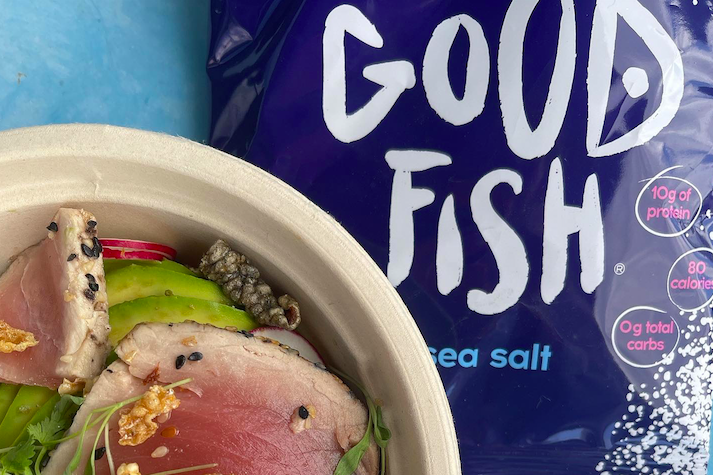
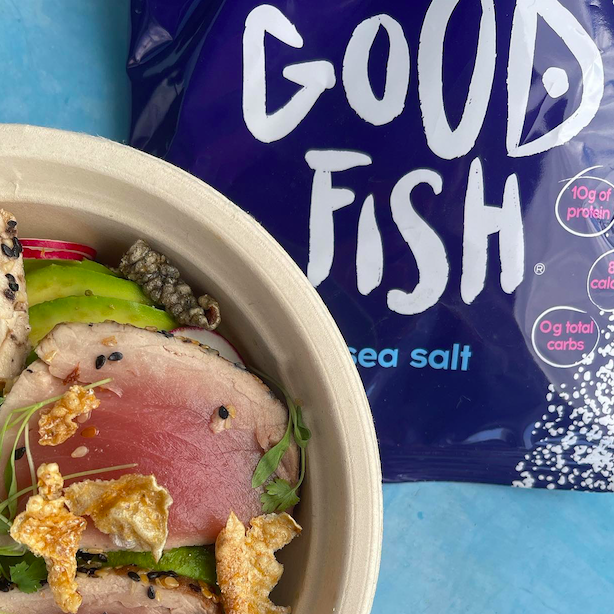
One of the best-known survivalists and outdoor adventurers, Bear Grylls, has teamed up with Goodfish, a leader in the sustainable seafood movement. Goodfish recently launched its “upcycled” wild-caught salmon skin products, thereby creating a new category of seafood snacks that include flavor combinations such as miso teryaki, chili lime and cranberry.
“What GoodFish is doing is so desperately needed in the world of ecological, healthy snack, nutrition,” said Grylls in a recent public statement. “With incredible innovation for good health and great sustainability, GoodFish is rethinking the snack and chip market, in terms of good fat and protein sources, and contributing to making the fishing industry much more environmentally friendly. It’s a genius pioneering endeavor with such huge potential, and they taste amazing.”
The wild sockeye salmon skin used in the crispy snacks is sourced from Bristol Bay, Alaska, which offers bountiful salmon runs because of its remote nature and the lack of industrial development. Unfortunately, the bay is under threat of the proposed Pebble Mine project, which critics say will have a severe impact on the fishery and the surrounding environment.
Goodfish imparts a strong dedication to protecting the environment in its marketing efforts. As its website states, “We believe the best way to protect Alaskan fisheries is by increasing their revenue and economic independence.” Producing high-value goods from what would otherwise be all that discarded salmon skin is an excellent avenue for achieving this, especially if its products don’t result in extracting more fish from Bristol Bay.
According to the company’s website, 2 billion pounds of salmon are discarded in Alaska annually. Goodfish takes what would have otherwise been wasted and make them into high-protein snacks. Each bag contains only a few ingredients: salmon skin, organic palm oil, sea salt and seasonings.
Goodfish partnered with Palm Done Right to source sustainable palm oil. In recent years, environmentalists have scrutinized palm oil for destroying wildlife habitat because it is a major driver in deforestation in some of the world’s most biodiverse forests. Yet, according to Palm Done Right, palm oil can “be one of the most sustainable and beneficial oils in the world, nurturing animals, people, communities and the environment.” It all comes down to the scale and practices that farmers use.
Goodfish’s nutrient-dense salmon skin snacks are also in line with the ongoing food trends including eating fewer carbs, more protein and foods high in Omega-3s. Salmon skin is also rich in marine collagen, which is a popular supplement over such claims that it helps build muscle mass and boost skin elasticity.
Partnering up with Bear Grylls is fitting, given his values and the type of snack Goodfish produces. The Emmy-award nominee, who is also the host of National Geographic's "Running Wild with Bear Grylls" and Discovery Channel's "Man vs. Wild," has made it out alive of some of the most hostile environments on the globe. Grylls’ witty personality draws audiences into a world that he’s on a mission to protect through education and awareness.
“We see so many people debating climate change” said Grylls in a 2019 interview about one of his productions, Hostile Planet. “‘Is it real? How bad is it, really?’ Obviously, the best way is to let the animals tell the stories. It’s heartbreaking – really heartbreaking. I don’t often have tears when I’m taking people out on the other shows, but to see these animals? Really heartbreaking.”
Image credit: GoodFish/Facebook
Plant-Based Meal Kits Could Be the Next Big Thing in Food


Recently, Nestlé’s Freshly, a prepared meal service, boosted its chef-prepared meal kits by introducing its first-ever plant-based meals product line. To understand why the Swiss food giant made this move - and indeed, to understand why one year ago it acquired Freshly - we need to zoom in on the two trends that are increasingly shaping the food industry: the home kitchen’s downfall and the rise of plant-based foods.
The decline of the home kitchen
During the last four or five years, we have witnessed an explosion of food delivery services. Almost overnight, cities across the globe were filled with drivers and cyclists transporting everything from chicken makhani to raviolis with tomato-pesto sauce. Enabled by companies like Uber Eats, Doordash and Deliveroo, food delivery took a whole new meaning. Pizza, sushi, and Thai food were only the start of the options. Anything available at any restaurant could be eaten from the comfort of one’s couch while watching Netflix.
But restaurant delivery services like Uber Eats and Doordash are not the only companies thriving from this ongoing trend. Businesses exclusively dedicated to delivering ready to eat, ready to heat, and ready to cook meal kits are also on the rise. Fueled by the COVID-19 pandemic and by plans offering a variety of alternatives with up to 14 meals a week, global meal kit delivery services are expected to grow 13 percent from 2021 to 2028, and could reach an impressive size market of around $27 billion by 2028.
In line with this trend, a pre-COVID report by the investment bank UBS concluded that by 2030, most meals made at home may instead be ordered online and delivered from either restaurants or central kitchens. The report pointed to supermarket chains, in addition to food producers such as Nestlé, as the potential losers of this trend.
In this context, Nestlé’s motivation to pay $1.5 billion to acquire the New York-based Freshly seems clear. But what about the expansion to plant-based meals?
The rise of plant-based foods
The Food Institute points to 5 key opportunities to support the meal kit industry’s growing momentum: expanding product options beyond dinner time, lowering costs, increasing pre-made kits (as opposed to pre-cooked), addressing sustainability concerns and targeting consumers with specialized diets.

For Freshly, introducing its “Purely Plant” meal kits may check several - if not all - of these opportunities. For starters, meals in the Purely Plant menu, such as a baked lentil pasta, are all pre-made and fully compatible with lunch time. Furthermore, contrary to what many assume, research shows that due to the elevated cost of meat, on average it is less expensive to have a plant-based diet. Having said this, plant-based meals may be most attractive for a company like Freshly for the remaining two opportunities: addressing sustainability concerns and targeting consumers with specialized diets.
Meal kits and sustainability: It's complicated
Let’s go with the sustainability issue first: Are meal kits good or bad for the environment? As usual, the answer depends on a variety of factors. On the one hand, there is the problem of excessive packaging. Meal kits use cardboard boxes and ship in small packages. As a result, critics say they produce more packaging waste than grocery store meals, and are energy inefficient.
On the other hand, those who have embraced meal kits point out that they help reduce food waste and they can drive environmentally-friendly lifestyle changes. It is here where companies offering plant-based alternatives such as Freshly, as well as Purple Carrot and Hungryroot, can make a difference. In fact, research shows that turning to plant-based foods could add up to 49 percent to the global food supply without expanding croplands, and would significantly reduce carbon emissions and waste byproducts.
The good news is that more and more people are embracing plant-based food. A 27 percent growth in 2020 and a $7 billion U.S. plant-based food market attests to this. This, or the fact that 5 percent of U.S. adults are vegetarian and that many more often eat vegetarian meals, does not present the full picture, however. Meal kits companies have a specific, more plant-based oriented consumer base. For example, 65 percent of Freshly’s customers self-identify as flexitarians.
So, considering the kitchen’s downfall and the rise of plant-based food trends, Freshly’s Purely Plant meals will undoubtedly help Nestlé prepare for a potential future in which both meal kits and eco-friendly plant-based food are the norm. As this case shows, it looks like plant-based meal kits are good for the planet and for business.
U.S. Companies Push Back Against Controversial Texas Abortion Law
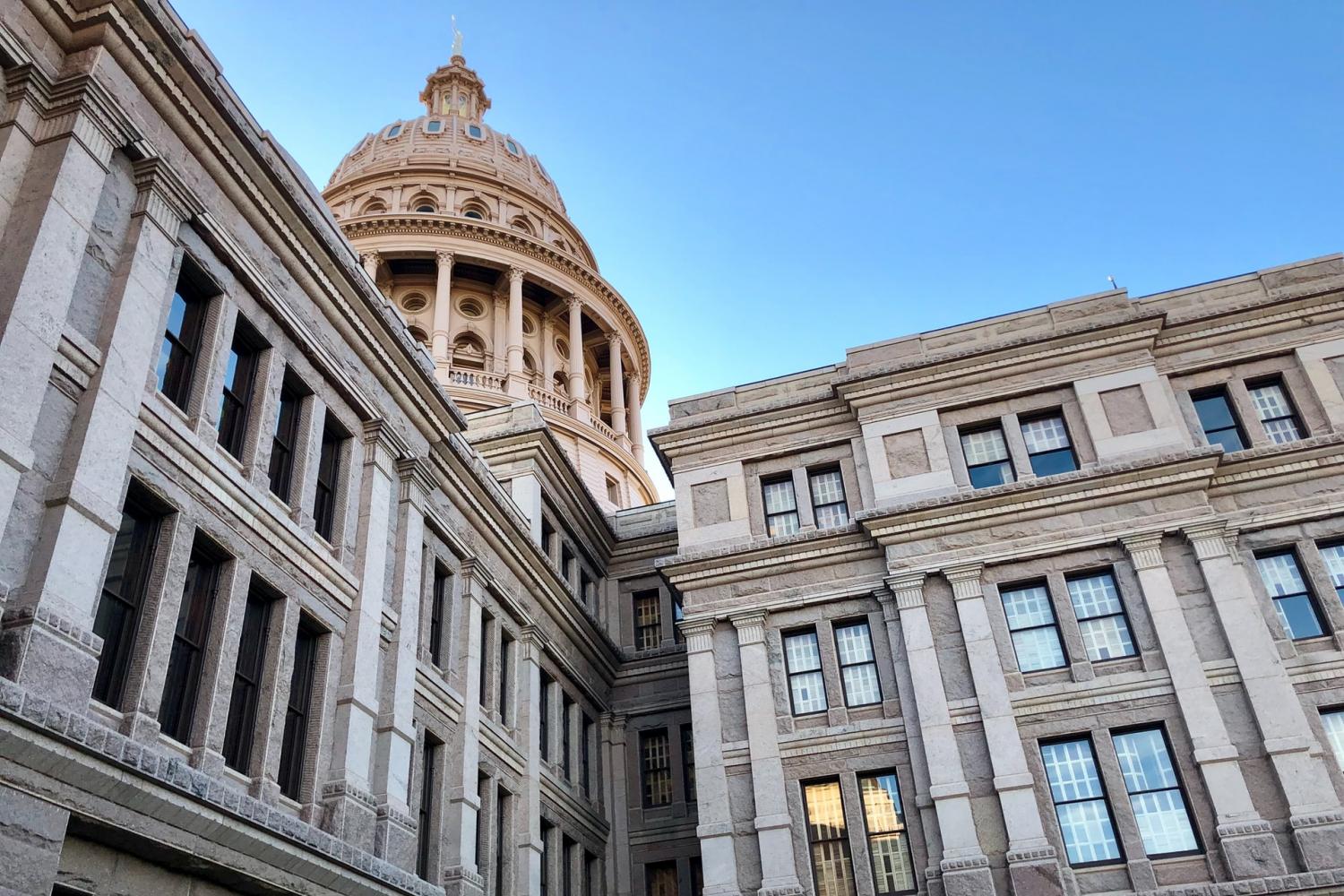

The Texas State Capitol in Austin.
As widely reported, a new controversial abortion law has gone into effect in Texas after the U.S. Supreme Court refused to block the legislation. The law bans abortions after six weeks and does not make exceptions in the case of rape or incest. As a result, some corporations, include Bumble, Match, Lyft and Uber, have voiced displeasure with how the law will hinder women’s access to health care. Others have even created funds to help protect their employees from repercussions related to the law. Numerous companies have expressed concern about the impact the abortion ban could have on their employees. Still, many brands have so far been silent.
Ridesharing companies seek to prevent drivers from falling into legal jeopardy
Uber and Lyft are creating defense funds to protect their drivers from any legal issues associated with giving rides to women seeking abortions. The new Texas abortion law allows citizens to sue people that perform abortions or “aid and abed” in one after six weeks. Unknowingly transporting someone to a clinic could fall within that realm.
The plaintiffs do not need to have any connection to the individual seeking the abortion or the clinic itself, and they can receive $10,000 plus legal fees if they win.
In an open letter to drivers and riders, Lyft announced: “We want to be clear: Drivers are never responsible for monitoring where their riders go or why. Imagine being a driver and not knowing if you are breaking the law by giving someone a ride. Similarly, riders never have to justify, or even share, where they are going and why. Imagine being a pregnant woman trying to get to a healthcare appointment and not knowing if your driver will cancel on you for fear of breaking a law. Both are completely unacceptable.”
Lyft said it will also donate $1 million to Planned Parenthood “to ensure that transportation is never a barrier to health care access.”
Tech companies maneuver to protect abortion rights
As for “snitching” or “spying” on women exerting their reproductive rights, as of press time, at least one tech company is pushing pack. GoDaddy shut down an anti-abortion website that attempted to gather anonymous tips about Texas abortions.
Meanwhile, the leaders of Bumble, the dating app company, and Match, which owns Tinder, created funds for Texas-based employees seeking abortions out of state. Because the ban is so strict, many expect women to seek abortions in other states with less restrictive laws. Both companies are based in Texas and have female CEOs. Note, it is the leaders of these organizations, and not the companies themselves, that are creating the funds.
“Bumble is women-founded and women-led, and from day one we’ve stood up for the most vulnerable,” CEO Whitney Wolfe tweeted. “We’ll keep fighting against regressive laws like #SB8.”
Shortly after, Match CEO Shar Dubey sent a memo to employees, as reported by NPR. "I'm not speaking about this as the CEO of a company," Dubey wrote in the memo. "I'm speaking about this personally, as a mother and a woman who has fervently cared about women's rights, including the very fundamental right of choice over her body."
“I immigrated to America from India over 25 years ago and I have to say, as a Texas resident, I am shocked that I now live in a state where women’s reproductive laws are more regressive than most of the world, including India."
Jeremy Stoppelman, CEO of Yelp, also issued a statement regarding the new abortion law. “The effective ban on abortions in Texas not only infringes on women’s rights to reproductive health care, but it puts their health and safety at greater risk,” he said. “We are deeply concerned about how this law will impact our employees in the state.”
The lure, and risks, of moving to states like Texas
The Texas abortion law comes at a time when many companies are migrating to Texas because of an attractive business environment, such as no income tax and a lower cost of living. In fact, Texas ranked as fourth in CNBC’s list of top states for business in 2021.
In particular, many Silicon Valley companies, including Hewlett Packard and Oracle, have relocated to Texas. Tesla is opening its new Gigafactory near Austin that is expected to begin operations in late 2021 with full-scale production in 2022.
Elon Musk made headlines when he moved earlier this year from Los Angeles to Austin, joining more than 3 million people who have moved to Texas since 2010.
Two years after a wave of anti-abortion legislation, companies are again in the spotlight
An open letter and print ad released by a group of CEOs in 2019, which included the heads of Bloomberg, DVF, Eileen Fisher, H&M and MAC, rings prescient this summer. “Restricting access to comprehensive reproductive care, including abortion, threatens the health, independence and economic stability of our employees and customers,” they wrote in representing the group Don’t Ban Equality. “Simply put, it goes against our values and is bad for business. It impairs our ability to build diverse and inclusive workforce pipelines, recruit top talent across the states, and protect the well-being of all the people who keep our businesses thriving day in and out.”
In the long run, companies that see an attractive business landscape in Texas and other states could find themselves falling behind in the ever-competitive search for talent. After the wave of state-level restrictions on abortion and reproductive services that marked the late spring of 2019, TriplePundit’s Tina Casey wrote: “In the U.S., the talent issue has come into stark relief as the workforce diversifies with more women … along with more people who identify outside of the conventional borders of gender.”
That pipeline of talent includes “career-oriented women in the workforce who are in their childbirth years all through [the] peak periods for academic progress, on-the-job training and promotion,” Casey added.
Image credit: Karson/Unsplash
Labor Day: An Important Reminder About Securing Resilience for Workers
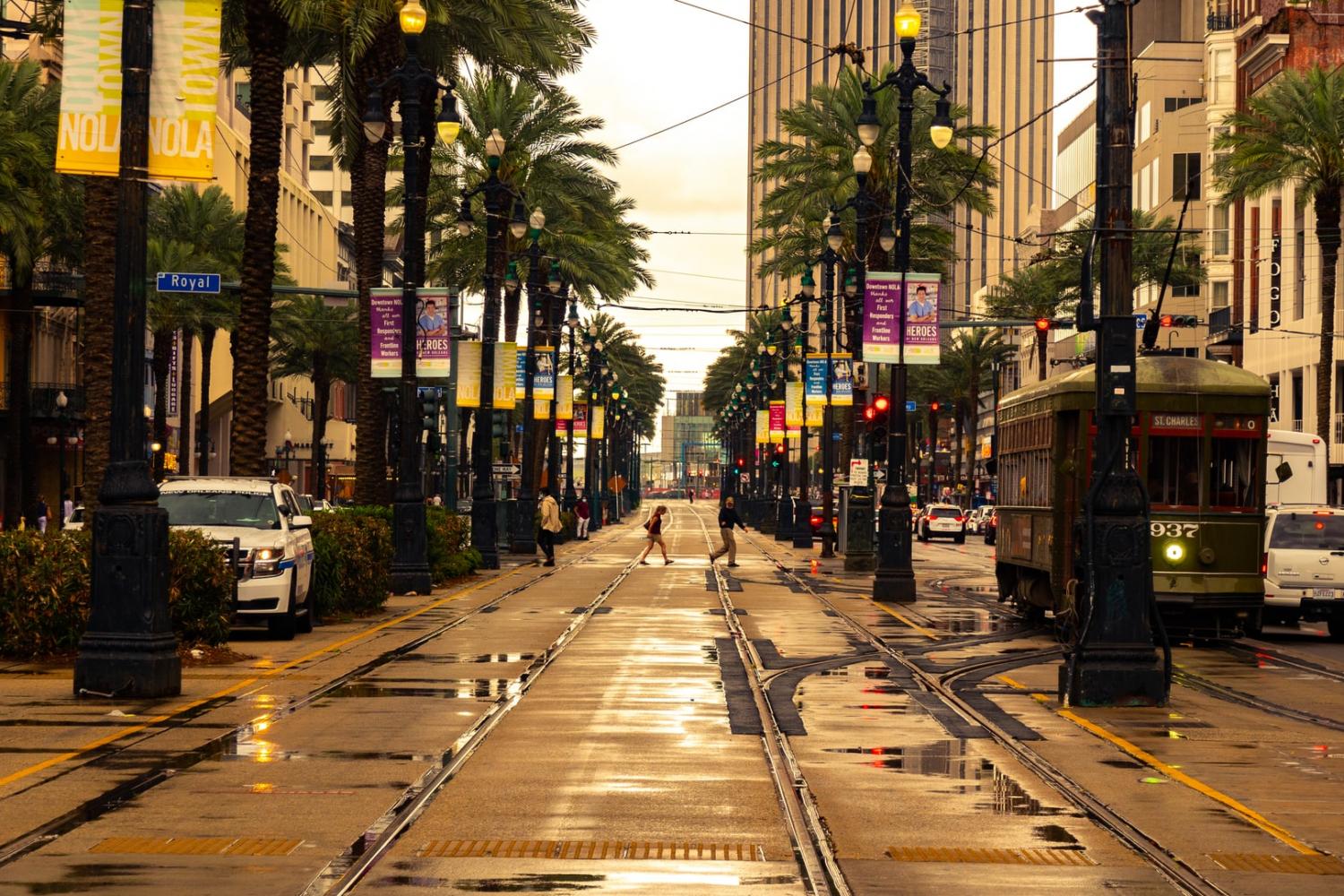
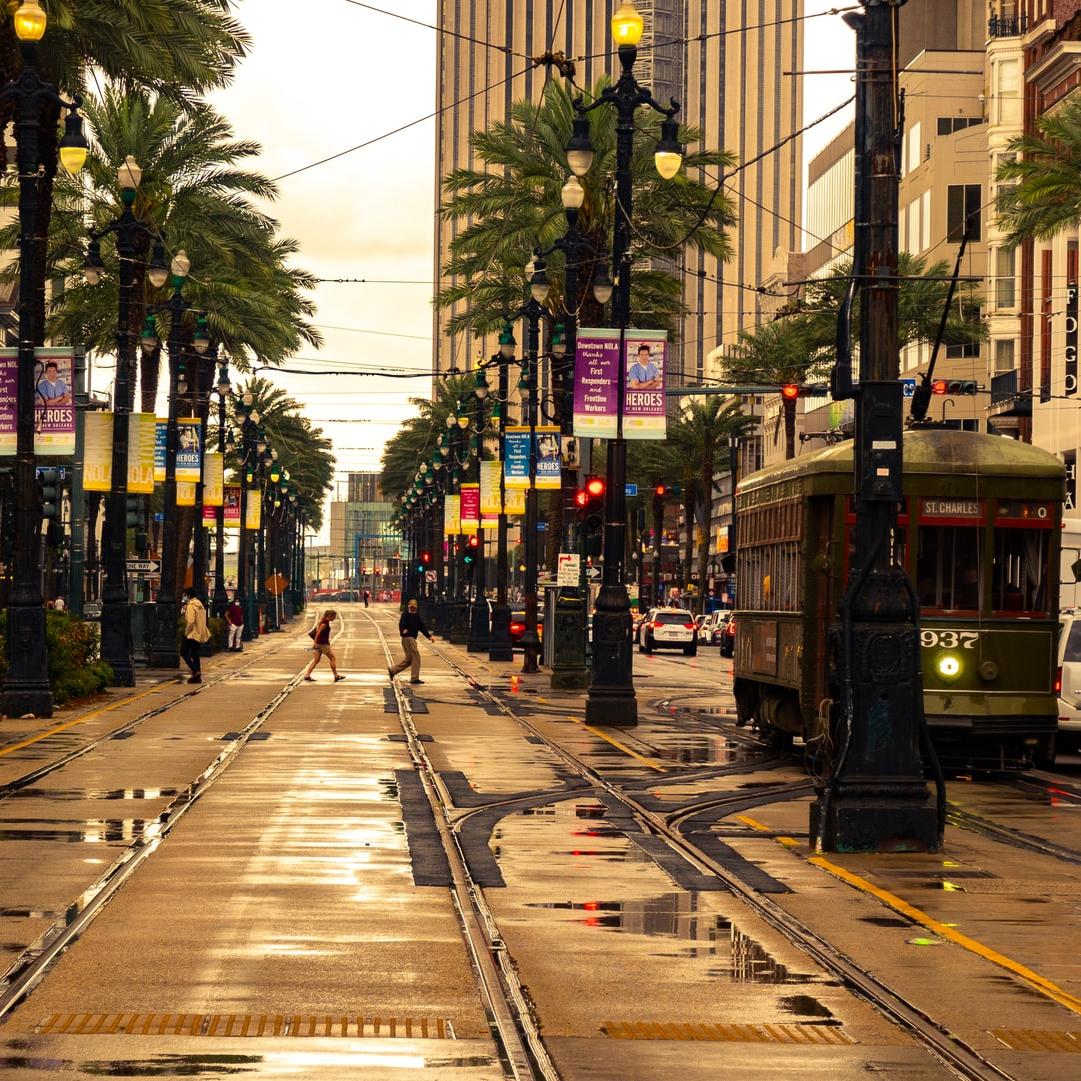
September is National Preparedness Month, and with good reason: We’re hitting peak hurricane and wildfire season. Preparedness is critical, but what does that mean in the face of repetitive battering by natural disasters intensified by climate change? The answer lies in resilience, commonly defined as the ability to bounce back when disaster strikes. For those living in vulnerable areas, like the Gulf Coast and western states, resilience is even more urgent.
Most often, when resilience is spoken about in climate circles, it centers on the infrastructure: grid hardening, nature-based solutions, distributed clean energy systems, increased biodiversity, improved water infrastructure, and so on. But the resilience must also focus on communities. To that end, building community resilience should start with people.
The problems that have led to the need for building resilience
Living through one climate-fueled natural disaster is stressful enough, but evidence mounts about the overall impact that climate change is having on our mental health. That stress is compounded if you happen to live in one of the areas battered time and again, such as New Orleans.
In 2005, Hurricane Katrina hit communities of color and low-income communities, often in the lowest-lying areas, the hardest. The people in those communities are also the ones who have struggled to get back on their feet since then. In addition to the physical destruction in neighborhoods, much of the healthcare infrastructure was destroyed, creating long-term physical and mental health challenges. The trauma continues to linger, and has been exacerbated by the COVID-19 pandemic, which has been a further blow to the city’s economy and well-being. Add Hurricane Ida to the mix, which struck the city on the 16th anniversary of Katrina, and it’s hard not to see that all of this affects the psyche and prospects of people living in and around New Orleans.

A solution for ensuring resilience for people and their communities
Some efforts to build resilience offer a way to bolster physical resilience while also empowering community members and others who want to help them. There is no one-size-fits-all model, but recent efforts are starting to focus more directly on developing the workforces to address resilience issues.
One idea is the Civilian Climate Corps. Modeled on the Civilian Conservation Corps created by President Franklin Roosevelt to get (mostly white) men back to work during the Great Depression - and also providing the workforce to build some of the largest infrastructure projects in the U.S. - it is a proposal that has been floated in Washington for years and recently revived in Congress and by the Biden administration. Many states and regions have their own versions of such programs, but a nationwide effort, as long as it were adequately funded, could go a long way to building a workforce focused on building community resilience. Advocates note, however, that in order to be successful, employment should be diverse and inclusive to reflect the communities in which they work.
A Civilian Climate Corps could work on a range of projects, from installing solar panels to building resilient stormwater infrastructure to installing urban gardens, thus enabling mitigation, adaptation, and resilience all to play a part. While state and regional groups continue to build workforces to help with conservation projects, one group aims to build a workforce specifically targeted at increasing resilience.
Enter the work of Resilience Force
Resilience Force is a nonprofit that focuses on mobilizing and advocating for the people who work to help communities recover from natural disasters, such as those in construction, healthcare and emergency response. Born out of a group advocating for immigrant worker rights, Resilience Force works with local and state governments to train and deploy workers with the aim of creating a national resilience workforce, based in the Federal Emergency Management Agency, that centers around the most affected communities. “Thousands of workers clear debris and trees, fix roofs, rebuild homes, schools, hospitals and entire cities,” Saket Soni, the Executive Director of Resilience Force, told TriplePundit. “While we believe that volunteers are indispensable after disaster strikes, we envision a paid resilience workforce, of tens of thousands of workers, who can do preparation and recovery work year-round.”
A national program could, according to Soni, be deployed to undertake critical rapid repair work and get people back into their homes after a natural disaster. Modeling how that could work, the organization established the New Orleans Resilience Corps, a public-private partnership backed by funding from the Rockefeller Foundation and the Ford Foundation, among others, that retrains unemployed service industry workers to bolster COVID-19 relief and climate disaster preparedness.
With communities of color on the front lines of both the pandemic and natural disasters, the New Orleans Resilience Corps prioritizes engaging those who feel the most impact. “A majority of the resilience workforce are people of color,” Soni explained to 3p. “A large portion are immigrants. A significant share are women. Resilience Force is the national voice for this rising workforce - the millions of people whose work, heart, and expertise make just and equitable recovery from disasters possible.” He envisions a rising resilience industry “to be a source of good jobs and a pathway to the middle class for communities on the front lines of climate change, much like the auto industry was in another era.”
With the initial focus on New Orleans—a natural place to start given the effects of climate change and COVID-19 on the city—the group hopes to expand the city-based model to other areas like Houston that face both recurring natural disasters and high rates of unemployment, especially within communities of color. The emphasis on particular communities is not random. “As a nation, we have become increasingly dependent on the work of rebuilders and repairers on the front lines [of climate change] to rebuild homes, schools and hospitals,” Soni said. “They are the ‘essential workers’ of the climate change era. And yet, resilience workers are locked into poverty-wage jobs without labor protections, standards or benefits.”
Soni hopes that through their efforts, they can bring attention and opportunities to those workers. “The same low-income communities and communities of color who are often bypassed for federal investments in resilience are the same communities that suffer from frequent disasters and a lack of good jobs. We can make sure that these resilience jobs, with high labor standards, are available to frontline communities.”
As we head into fall and likely more storm, flooding, and wildfire destruction, communities have to prepare for the worst. But when the next disaster is done and rebuilding starts, developing a diverse and inclusive workforce that is deeply invested in the community could be a powerful tool to getting people and cities back on their feet.
Image credit: Brother Swagler/Unsplash
This Dutch City Is a Model for Adapting to Climate Change and Threats of Flooding


As the world watches images of Louisiana flooding in the aftermath of Hurricane Ida, it all seems eerily familiar. Not just that it’s similar to post-Katrina flooding, but 2021 has seen some of the worst flooding around the world. From Germany to Turkey to Tennessee to New South Wales, the news seemed never-ending. Hurricane season is entering its most intense phase, so we can expect more flooding news. It is no wonder that floods sit at the top of the risk pile for investors concerned about the impacts of climate change.
To that end, climate change mitigation is the surest way to ensure floods don’t continue to worsen in the future. Communities are already feeling the impacts of climate change, however, so the focus must be on adaptation. At the 2021 World Water Week, one community showcased its integrative approach to flood management.
Valuing water principles in the era of climate change
In 2019, the Dutch prime minister launched the Valuing Water Initiative as an effort to implement the United Nations’ Valuing Water Principles. The Principles were formulated by the High Level of Panel on Water in 2016 to implement Sustainable Development Goal 6 (Ensure available of sustainable management of water and sanitation for all). The idea behind them was to create a common ground starting point for governments, nonprofits, and businesses in solving water problems. The five principles include recognizing the multiple values of water, reconciling disparate values, protect all sources of water, raise public awareness water to enable more inclusive participation, and ensure investment to harness innovation.
With about half the country’s inhabitants living in areas that are below sea level, the Netherlands has a long history of engineering water solutions. Considered one of the leaders in innovative water solutions, the country now faces the same challenges as other countries: what has worked in the past may need to be amplified to deal with the effects of climate change. By creating the Valuing Water Initiatives, the Netherlands is taking a more comprehensive approach to integrating stakeholder needs into water planning. One of the showcases of the Initiative is the city of Dordrecht.
Dordrecht has centuries of experience from being a target of floods
Dordrecht (shown above) is in the southwestern part of the Netherlands and sits at the intersection of the sea and three major rivers, making it prime target for flooding. In fact, Dordrecht is the site of one of the most catastrophic floods in the Low Land’s history: in 1421, when Dordrecht was the capital city of Holland, a major storm caused several of the dykes to break. Around twenty villages around the city were completely destroyed, with casualties of up to 10,000 people. For decades afterward, the city was an island, only accessible by boat, and as a result, Dordrecht lost much of its importance.
With that history in mind—and it was far from the only time the area has flooded over the centuries—the city is now the flagship in the Netherlands for the Valuing Water Initiative. The project focuses on how to change the view of flooding as part of sustainable urban design.
Previously, city planners focused on protecting the city through a system of physical flood defenses such as dikes, storm barriers, and walls, engineered to withstand occasional flooding. But with climate change, they recognized that a multi-layered approach was necessary. The added layers to the project include prevention and preparation, two strategies that can be controversial, so it’s where the necessity of including stakeholder input and attracting enough investment come into play.
Prevention is an essential cornerstone of every successful adaptation strategy in flood-prone areas. Each community or region must decide what is appropriate for their particular situation, based on historical as well as potential modeled outcomes, geology and other local conditions. For example, as part of the prevention strategy, the Valuing Water Initiative recommends Dordrecht not grant building permits in areas proven to be prone to flooding.
This is a serious consideration, regardless of where a community is located. After devastating hurricanes, like Katrina, Harvey, Irma and Michael hit the United States, outdated flood maps and loose permitting requirements became a major topic of conversation. Unfortunately, more often than not, without adequate policies in place to prevent rebuilding in flood-prone areas, we keep seeing the same areas flooded over and over again.
The final layer of the Valuing Water Initiative is preparation; that is, having a plan in place for the flooding inevitably happens. Focusing on the De Staart district in Dordrecht, which sits higher than the rest of the city, planners are developing a multi-faceted approach to getting its residents to safety in the event of a flood. The project includes developing sustainable housing, flexible spaces and a public transportation system to help with evacuations. In many instances, when people do not evacuate areas hit by natural disasters, it is because they cannot afford to leave. Further, it is often the most vulnerable who live in the areas most often hit because that land is the cheapest. Establishing an evacuation plan available to all residents requires input from affected stakeholders as well as significant investment to ensure the success of the plan.
Ida shows climate adaptation is the reality
The recently released IPCC climate report highlighted in the strongest terms that work must be done to stall and reduce carbon and methane emissions to slow the progression of climate change. But it also made clear that we already feel the effects. The intensity and frequency of natural disasters already occurring make undertaking substantive adaptation programs necessary. Without adequate adaptation planning, the economic impacts could be devastating. In order to be successful, they will need policy direction, diverse and inclusive stakeholder engagement, and private investment.
In our modern world, we have the engineering, policy, and financial understanding to develop and integrate sustainable design into adaptation schemes. Building a multi-billion-dollar dike in the Gulf of Mexico may help with a storm surge at the level of Ida, but it won’t stop the flooding from the concomitant rain, and studies show nature-based solutions need to be included. Understanding that these impacts are already here makes the need for a comprehensive plan to manage them imperative. The Dutch have been engineering water management solutions for centuries. As they continue to innovate, other countries should follow their lead.
Image credit: Aron Marinelli/Unsplash
18 Months In, Here’s How Black Business Owners Pivoted During the Pandemic


In recent years, and especially last summer, we’ve seen social justice issues unfold and then spark bold calls for change. Citizens around the world have taken stand for justice, and corporate leaders were no exception to speaking up. Despite plenty of shortcomings, the work promised in committing to racial injustice, income inequality and hunger, and food insecurity did not go entirely in vain. In fact, as they are directly affected, social justice is still fresh in the minds of many Black business owners, according to a recent survey.
Bank of America surveyed Black small business owners about their priorities, the challenges of business ownership and the COVID-19 pandemic. The survey revealed that Black business owners are absolutely championing for social change and that social justice issues have had an impact on their business operations.
“We did find that 94 percent of the entrepreneurs are advocating for social change so it’s actually to the point where it’s really driven entrepreneurs to advocate for this change not just through their communities but through their business,” said Sharon Miller, head of small business at Bank of America, in an interview with TriplePundit.
According to Bank of America’s data, more than half of Black business owners surveyed have communicated a commitment to equality and giving back to their local communities. In addition, one-third of these business owners are either seeking more minority and women-owned vendors; seeking vendors who promote diversity, quality and inclusion; or are hiring diverse talent.
Where Black business owners have concern and seek change
Miller explained to 3p that the existing small business ownership challenges includes the juggling of several roles. Small business owners wear multiple hats, from chief executive officer to human resources, and this dynamic creates additional stress, according to Miller.
This is reflected in Bank of America’s data. In addition to being inspired by social justice, Black business owners are “acknowledging their own stress.” In fact, 64 percent of owners said their mental health was affected by the pandemic and 95 percent of owners said the pandemic created extra stress for operating their businesses. As a result, they dealt with the pressure by prioritizing time with family and friends, engaging in entertaining activities, adopting healthy habits, and practicing religion or spirituality.
It is no surprise that the pandemic has exacerbated another challenge: the challenge of working multiple roles and managing its stress. This is because of the pandemic-induced employee layoffs and business closures. To this point, Miller called attention to a silver lining. She explained to 3p that the pandemic has changed the way business owners work, including adopting healthy habits, striving for work-life balance and experiencing efficiency when switching to digital platforms.
Black business owners are also dealing with the high levels of stress that has come with the pandemic by carrying out new changes that prioritize employee wellbeing. The top changes include allowing a flexible work schedule, working from home, offering additional paid time off or vacation time, financial wellness programs, and expanding well-being programs to include behavioral and mental health programs.
Advocating for social justice amidst financial challenges
Black-owned businesses disproportionately faced financial challenges during the pandemic. In fact, 41 percent of Black owned businesses completely shut down, compared to 17 percent of white-owned businesses. While Black business owners are keen on advocating for social justice and implementing changes, they are also compelled to focus and work through financial hardships. This can slow down any of their efforts focused on advocating for social justice.
There is at least one way to slow or turn this situation around. Bank of America’s data reveals that funding is essential in helping Black business owners recover faster from the pandemic. This is because half of the owners intend to apply for a bank loan or credit this year, which is intended for payroll and staffing, new safety measures and expanding operations.
Miller explained to 3p that Bank of America recognizes what needs to be done. This is evident in its participation in the U.S. Paycheck Protection Program (PPP) and partnerships with community development financial institutions (CDFIs). Bank of America has also made a $1 billion, four-year commitment to support local communities facing economic and racial injustice which was amplified by the pandemic. This commitment focuses on health, employment, small businesses, and housing. Advocating for social justice has a knock-on effect on business operations and employee wellbeing. With additional support from banks and conglomerates, Black owned businesses can thrive and continue to advance social justice.
Image credit: Pexels
September 8 - The Road to COP26: What’s the Role of Business in a 1.5°C Future?


The latest report from the Intergovernmental Panel on Climate Change (IPCC) delivered a “code red for humanity." Global temperature rise has reached 1.5 degrees Celsius, and human activity is “unequivocally” to blame.
As TriplePundit’s Leon Kaye wrote last month in the wake of that report, “… the key takeaways are plain: The consensus is that climate change is here, it’s undeniable, the outlook is bad, and while there is hope, some of the damage already or to be inflicted cannot be rolled back.”
So, where do we go from here?
This fall, countries will gather for COP26 to discuss global climate action, but in the meantime, the team here at 3p and 3BL Media is asking the big questions about the role businesses can take in the fight against the climate crisis.
To that end, join us on next Wednesday at September 8 at 1 p.m. ET (10 a.m. PT, 6:00 p.m. BST) for the third installment of 3BL Forum: Brands Taking Stands - LIVE!. We’ll talk with leaders from top companies about how businesses can cut their own emissions, engage with governments, suppliers and peers on climate-smart policies and ensure climate justice for at-risk communities worldwide. We’re pleased to offer this event for free.
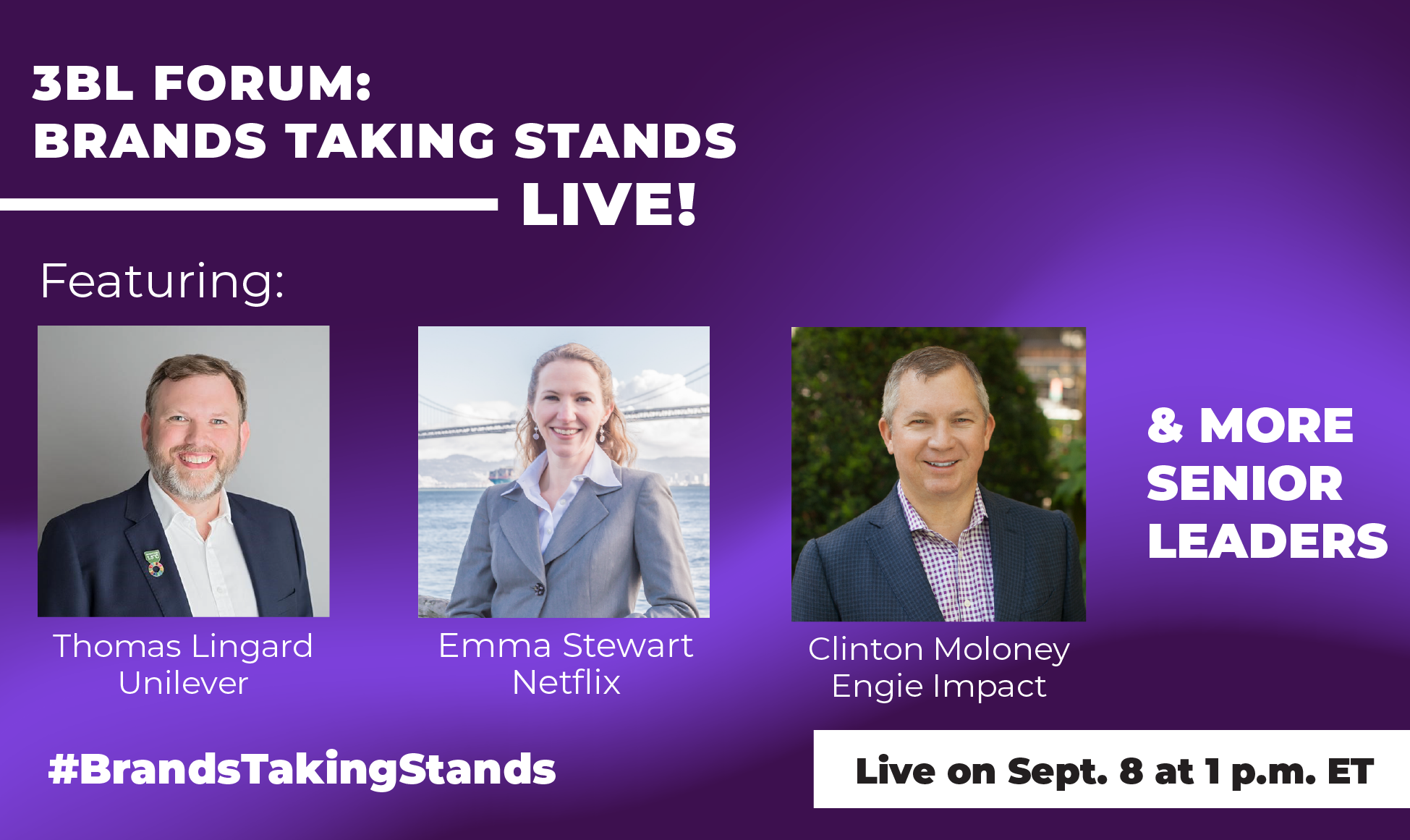
During this session’s 45 minutes, you’ll hear from senior leaders, including:
- Thomas Lingard, global sustainability director of Unilever
- Emma Stewart, Netflix’s first sustainability officer
- Clinton Moloney, managing director of sustainability solutions at Engie Impact
- Rebekah Moses, head of impact strategy for Impossible Foods
- Caroline Bushnell, vice president of corporate engagement at the Good Food Institute
- Diandra Marizet, co-founder and executive director of Intersectional Environmentalist
- Sabs Katz, co-founder and partnerships lead of Intersectional Environmentalist
- Jami Lewchik, senior brand manager for Tazo Tea
Throughout the year, 3BL Forum: Brands Taking Stands – LIVE! has convened various companies’ leaders from top brands for a series of sessions meant to explore "the why" and "the how" behind business leadership at this critical moment in history.
Again, register at no cost here.
Image credit: Patrick Perkins/Unsplash